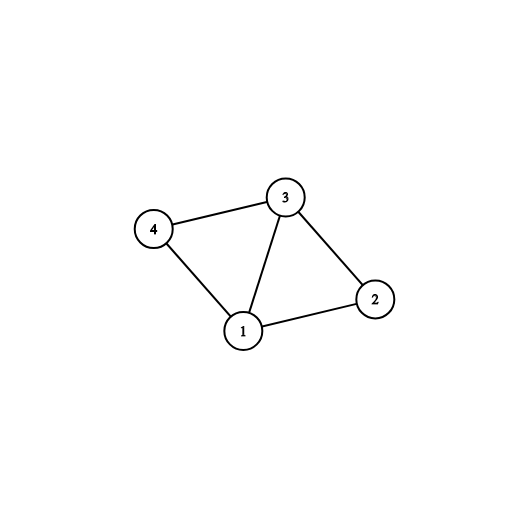CF1133F2.Spanning Tree with One Fixed Degree
普及/提高-
通过率:0%
AC君温馨提醒
该题目为【codeforces】题库的题目,您提交的代码将被提交至codeforces进行远程评测,并由ACGO抓取测评结果后进行展示。由于远程测评的测评机由其他平台提供,我们无法保证该服务的稳定性,若提交后无反应,请等待一段时间后再进行重试。
题目描述
You are given an undirected unweighted connected graph consisting of n vertices and m edges. It is guaranteed that there are no self-loops or multiple edges in the given graph.
Your task is to find any spanning tree of this graph such that the degree of the first vertex (vertex with label 1 on it) is equal to D (or say that there are no such spanning trees). Recall that the degree of a vertex is the number of edges incident to it.
输入格式
The first line contains three integers n , m and D ( 2≤n≤2⋅105 , n−1≤m≤min(2⋅105,2n(n−1)),1≤D<n ) — the number of vertices, the number of edges and required degree of the first vertex, respectively.
The following m lines denote edges: edge i is represented by a pair of integers vi , ui ( 1≤vi,ui≤n , ui=vi ), which are the indices of vertices connected by the edge. There are no loops or multiple edges in the given graph, i. e. for each pair ( vi,ui ) there are no other pairs ( vi,ui ) or ( ui,vi ) in the list of edges, and for each pair (vi,ui) the condition vi=ui is satisfied.
输出格式
If there is no spanning tree satisfying the condition from the problem statement, print "NO" in the first line.
Otherwise print "YES" in the first line and then print n−1 lines describing the edges of a spanning tree such that the degree of the first vertex (vertex with label 1 on it) is equal to D . Make sure that the edges of the printed spanning tree form some subset of the input edges (order doesn't matter and edge (v,u) is considered the same as the edge (u,v) ).
If there are multiple possible answers, print any of them.
输入输出样例
输入#1
4 5 1 1 2 1 3 1 4 2 3 3 4
输出#1
YES 2 1 2 3 3 4
输入#2
4 5 3 1 2 1 3 1 4 2 3 3 4
输出#2
YES 1 2 1 3 4 1
输入#3
4 4 3 1 2 1 4 2 3 3 4
输出#3
NO
说明/提示
The picture corresponding to the first and second examples: 
The picture corresponding to the third example: 